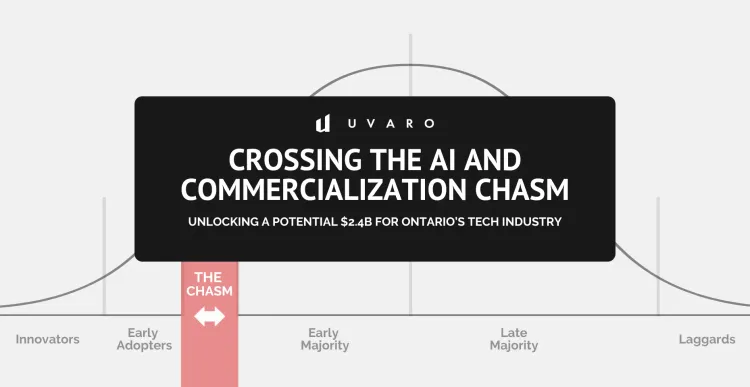ICYMI: Statistics Canada Report Sheds Light on Productivity and AI Adoption
Discover the latest findings from Statistics Canada on Canada's productivity trends, the role of AI, and the challenges in technology adoption. Learn about the opportunities for businesses to enhance productivity and stay competitive.

Jul 31, 2024
Recently, Statistics Canada released a report titled "Challenges and Opportunities in Innovation, Technology Adoption, and Productivity." This report is part of the "Research to Insights" series and provides a deep dive into the current state of innovation, productivity, and the adoption of advanced technologies in Canada. Here's a focused look at the productivity trends and the role of artificial intelligence (AI) highlighted in the report.
Productivity Trends
Canada's labor productivity growth has been notably slower compared to other advanced economies. Since 2000, Canada's labor productivity has grown at an average annual rate of only 0.8%, significantly lagging behind the United States, which has seen a 1.9% increase. Key factors contributing to this productivity gap include:
- Weak Capital Investment: Canadian businesses have been slow to invest in new technologies and infrastructure, essential for boosting productivity.
- Lower Productivity in High-Tech Sectors: Industries such as telecommunications, computer, and electronic product manufacturing have not matched the productivity levels of their international counterparts.
- Market Dynamics: A larger share of small and medium-sized enterprises (SMEs) and reduced market competition have stifled innovation and efficiency. The rate of new business entries has decreased since 2015, further diminishing competition.
- Regulatory Environment: An increase in regulatory requirements has negatively impacted productivity growth, with a 40% rise in regulations from 2006 to 2021.
Key Graph From The Report - Labour Productivity Growth

American productivity has been outpacing Canadian productivity, with a dramatic increase while Canada experienced six consecutive quarters of decline leading into 2024.
The Role of AI in Enhancing Productivity
Despite these challenges, the report underscores the transformative potential of AI and other advanced technologies in improving productivity. However, the adoption of such technologies in Canada remains limited, with only a small percentage of businesses leveraging AI and robotics. Key obstacles include:
- Low Returns on Investment: Many businesses do not see immediate benefits from AI, making them hesitant to invest heavily.
- Skills Gap: There is a significant shortage of skilled workers capable of implementing and managing AI technologies.
- Integration Challenges: Integrating AI with existing systems and processes poses considerable technical challenges.
Key Graph From The Report - AI Expenditure 2020-2022

More recent data as of the second quarter of 2024 shows a similar lack of adoption of AI technology with about one-half of businesses reporting that they did not have any plans to adopt or incorporate AI or other advanced digital technologies over the next 12 months.
AI's Impact on the Workforce
AI is expected to significantly impact the Canadian workforce, affecting a broad range of jobs. According to the report:
- High Exposure and High Complementarity: 60% of workers are in roles that either complement AI (enhancing their productivity) or are highly exposed to it (risking job displacement).
- Income Disparities: High-income earners are more likely to be in roles that benefit from AI, while middle-income workers face a greater risk of displacement.
Key Graph From The Report - Roles Impacted By AI

AI will impact a majority of roles in the Canadian workforce in the coming months, years, and decades. To adapt, our workforce must reskill to ensure they have the right training and skills. By combining these skills with our capital investments, we can achieve significant multi-factor productivity improvements.
Conclusion
This report shares the many challenges and opportunities Canada faces in innovation, technology adoption, and productivity within the Canadian workforce. We encourage you to explore the full report for a full understanding of the data shared.
To learn more about how Uvaro is contributing to the conversation and solutions for workforce productivity, we invite you to join our webinar "Rebuilding A Productive Workforce: Skills Training That Drives Productivity & Growth For Canada" on Wednesday, August 21st. Featuring panelists from Digital Nova Scotia and RBC's Innovation Hub, we'll discuss how businesses can enhance training and skills development to boost productivity at regional and national levels. Don’t miss this chance to join and contribute to this important conversation on workforce productivity!





